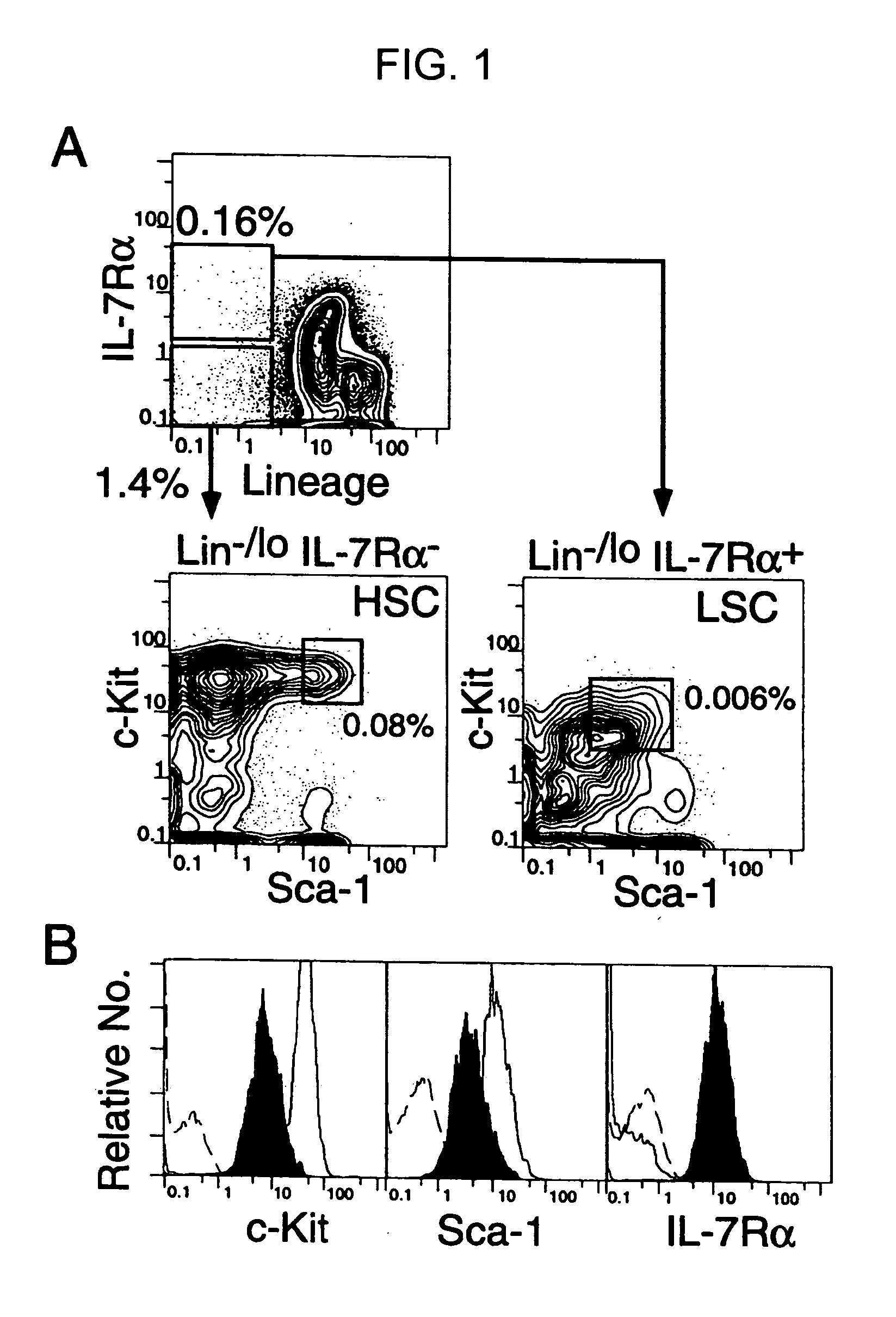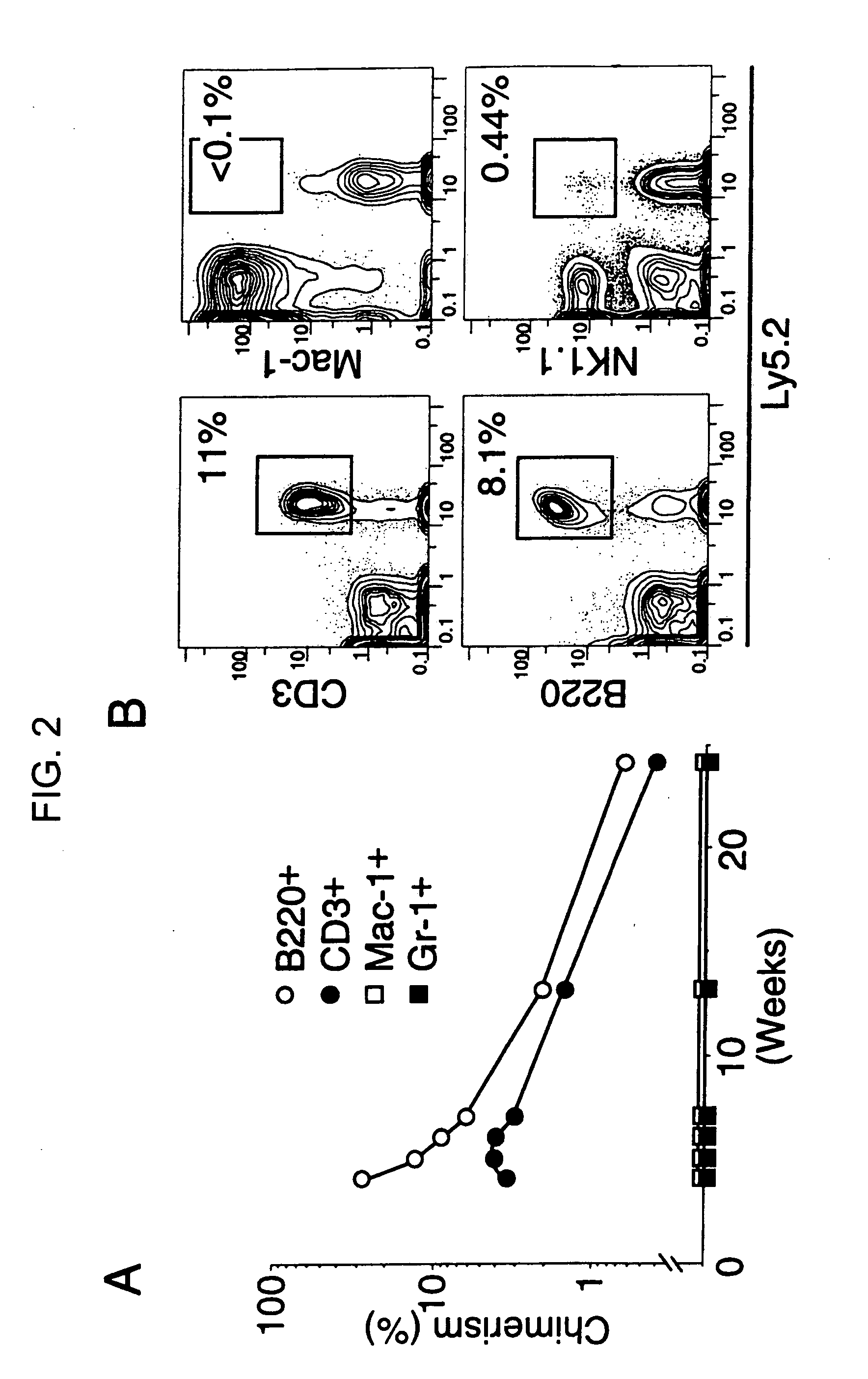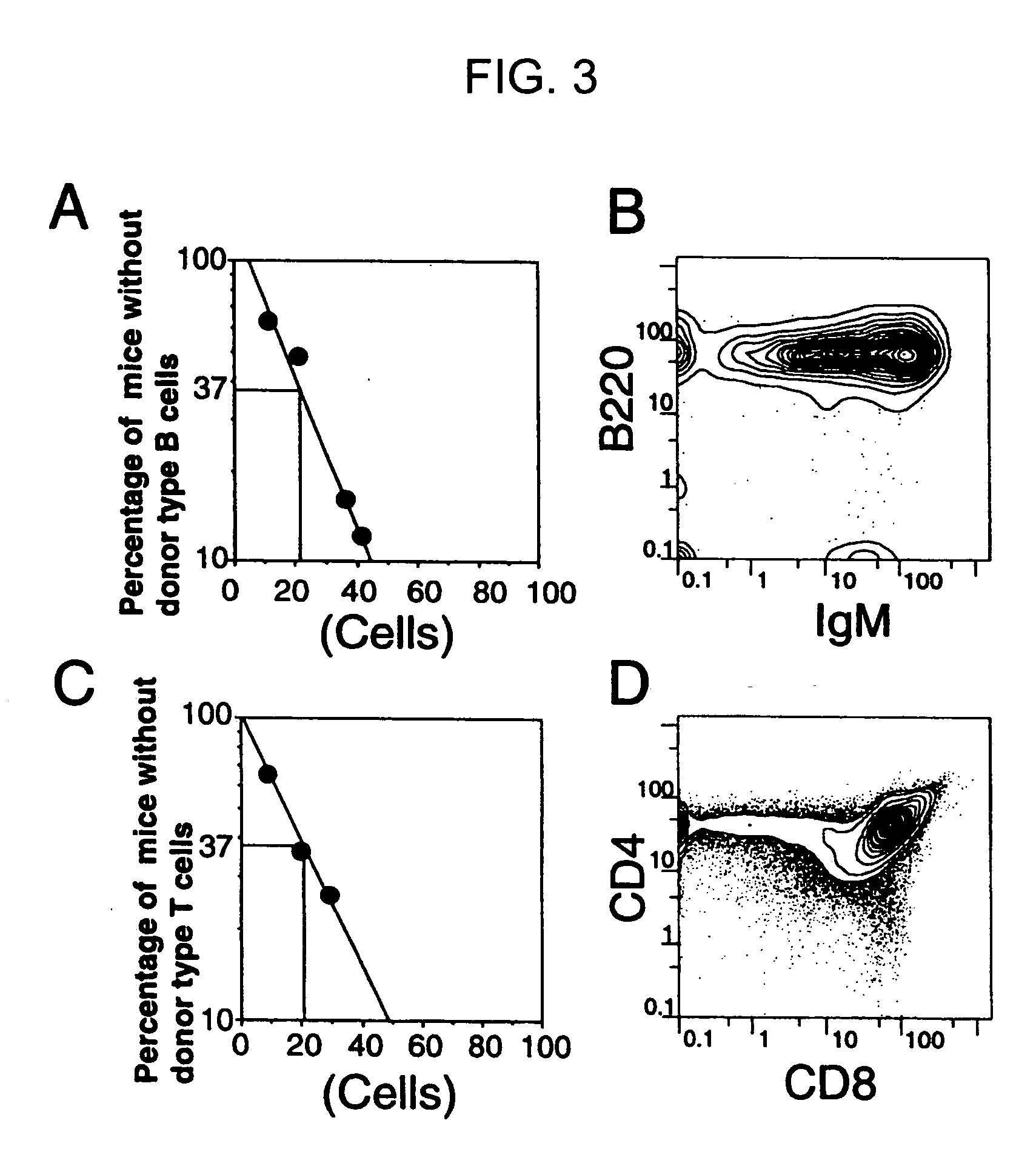Mammalian common lymphoid progenitor cell
a common lymphoid and progenitor cell technology, applied in the field of common lymphoid progenitor cells in mammals, can solve the problems of difficult identification of intermediate bipotent or oligopotent progenitors, difficult to successfully manipulate such a complex system, and autoimmune diseases
- Summary
- Abstract
- Description
- Claims
- Application Information
AI Technical Summary
Benefits of technology
Problems solved by technology
Method used
Image
Examples
Embodiment Construction
[0016] Mammalian hematopoietic progenitor cells that are committed to lymphoid lineages are provided, herein termed a common lymphoid progenitor (CLP). These cells give rise to B cells, T cells and natural killer cells, as evidenced by their growth and differentiation in vitro and in vivo. Unlike the hematopoietic stem cell, the subject cells are developmentally restricted to the lymphoid lineages. The CLP population is useful in transplantation to provide a recipient with lymphoid cells; for drug screening; experimental models of lymphoid differentiation and interaction; screening in vitro assays to define growth and differentiation factors, and to characterize receptors involved in lymphocyte development and regulation; and the like. The native cells may be used for these purposes, or they may be genetically modified to provide altered capabilities.
[0017] CLPs are separated from a complex mixture of cells by using reagents that specifically recognize markers on the cell surface, ...
PUM
| Property | Measurement | Unit |
|---|---|---|
| temperature | aaaaa | aaaaa |
| temperature | aaaaa | aaaaa |
| heat | aaaaa | aaaaa |
Abstract
Description
Claims
Application Information
 Login to View More
Login to View More - R&D
- Intellectual Property
- Life Sciences
- Materials
- Tech Scout
- Unparalleled Data Quality
- Higher Quality Content
- 60% Fewer Hallucinations
Browse by: Latest US Patents, China's latest patents, Technical Efficacy Thesaurus, Application Domain, Technology Topic, Popular Technical Reports.
© 2025 PatSnap. All rights reserved.Legal|Privacy policy|Modern Slavery Act Transparency Statement|Sitemap|About US| Contact US: help@patsnap.com



